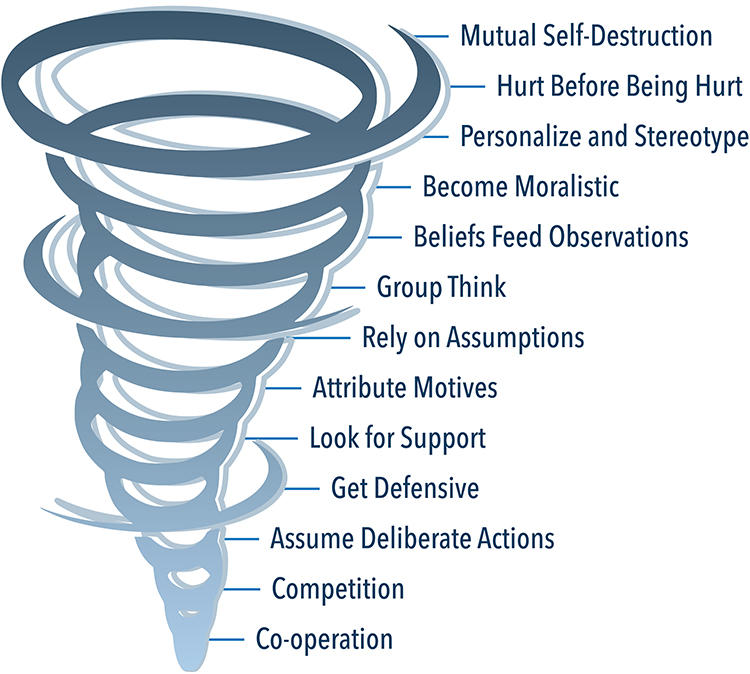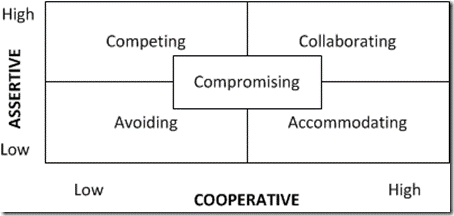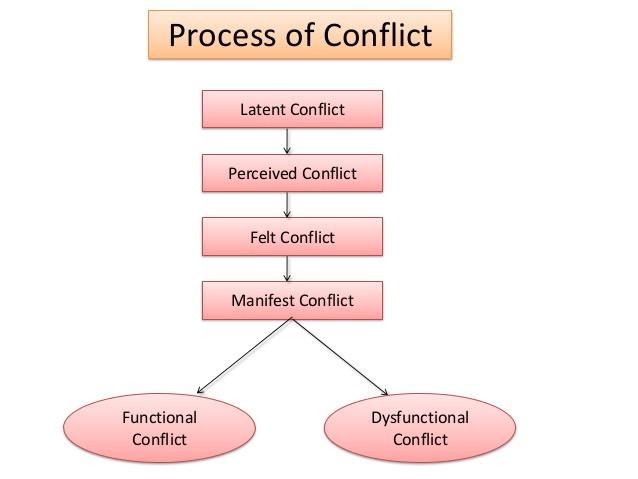The peculiarity of medical employees’ professional environment is that almost every sphere of their activity involves working in a team and constant interaction with colleagues. Even though healthcare specialists are engaged in performing immediate duties, their activities are related to one another since it is impossible to achieve positive patient outcomes if appropriate communication is not maintained.
The practice of the junior medical staff is associated with high responsibility, physical and emotional stress, as well as the lack of clear duty delineation and the standards of nursing activities. The intensity of labor contributes to emerging contradictions, disputes, clashes, rivalry, and misunderstanding among employees and leads to conflicts, which, in turn, affects the outcomes of care adversely.
In this regard, there is a need to find relevant strategies to manage such controversial situations in the workplace. In the decision-making process as one of the important stages of nursing practice, any manifestations of aggression towards one another are unacceptable because this can disrupt the natural course of work and cause slowdown inactivity, which is fraught with deterioration in productivity indicators.
Accordingly, searching for the methods of managing conflict situations during analytical work is a crucial task. The management of individual nursing units should take into account the subordinates’ various traits. Historically, it turns out that team members working in clinical settings have different social, cultural, religious, or other backgrounds. However, these differences should not be the reason for conflicts and influence the decision-making process.
Assessing the significance of work in this direction is because the junior medical staff is involved in close contact with patients, and specialists’ poor training or the incorrect execution of direct duties may cause significant discontent of those who need medical care (4 “Conflict escalation tornado,” n.d.). Figure 1 shows how the conflict in a nursing environment can develop.

The history of the development of conflict management practices in decision making among nurses is based on finding relevant leadership approaches aimed at eliminating controversial situations in teams and solving all the problems as soon as possible. According to 1 Ahanchian, Zeydi, and Armat (2015), the hierarchical structure of work in healthcare facilities makes it possible to apply different management styles that have distinctive implications. These principles of control imply using certain governing solutions for conflict situations, and Figure 2 demonstrates the relationship among the key strategies and the success of their use (7 “Management styles and communication conflicts,” n.d.).

The key objective of this work is to assess conflict management styles as the basic mechanisms for resolving controversial situations in the decision-making process in nursing communities. To cover this objective, it is essential to consider all the concepts and approaches to the organization of nurses’ work to compare these models and analyze their relevance in modern practice. As 6 Johansen and Cadmus (2016) note, “conflict management style (CMS) is a multidimensional concept consisting of five styles of managing conflict (integrating, obliging, dominating, avoiding and compromising)” (p. 212).
Accordingly, assessing the effectiveness of these concepts concerning decision making may provide valuable results and conclude their significance in the nursing environment. As a key research method, a literature review will be conducted, and relevant academic sources will be involved. The detailed analysis of the methods of conflict management in decision making can help increase nurses’ productivity and eliminate the factors hampering the working process.
Background
Healthcare management is the process of purposeful influence on the system of providing medical care to the population to ensure its effective functioning and development. For a particular organization to work clearly, leaders have to make a series of right choices from several alternative possibilities, which is not an easy task. However, if conflicts arise within teams, this complicates the entire procedure of planning activities and carries additional challenges associated with the need to regulate the relationships among subordinates.
Concerning nursing practice, conflict behavior is fraught with significant issues because the junior medical staff performs many valuable procedures and interacts directly with patients. Accordingly, the deterioration of the operating mode affects the general medical process adversely and damages the reputation of a particular healthcare institution.
The reasons for the development of conflicts among nurses may be different, for instance, social, cultural, professional, and others. As 2 Almost et al. (2016) remark, the lack of leadership participation is fraught with the loss of working concentration in the nursing environment and, therefore, labor discipline violations, which affects the results of professional activity negatively. The historical background of the development of conflict management in decision making is due to the difficulties that the heads of individual medical units face periodically. 5 Johansen (2014) argues that in various departments, the manifestations of misunderstanding among team members are expressed differently.
The author cites an example of intensive care units where interpersonal conflicts are the most common form of disagreement (5 Johansen, 2014). The stress and burden that the medical staff encounters in the process of caring for patients in serious conditions lead to irritation, the loss of concentration, and, as a result, misunderstanding among participants in the working process. Therefore, the nature of conflict management is characterized by different approaches to assessing problems and improving the situation to avoid violations of professional prescriptions and the ethical code of conduct for healthcare employees.
Concerning the topic of conflict management, it is also crucial to consider the nature of misunderstanding, which is the root cause and encourages further actions. The stages of the disagreement development in a nursing team go through several stages, and the study of each of them allows researchers in this field to draw competent conclusions regarding potentially effective measures to eliminate controversial situations. Figure 3 shows the key stages of the conflict in the practice of medical professionals and suggests that leadership control should be based on the nature of misunderstanding (8 “Process of communication conflicts in the nursing environment,” 2019).

The facts presented indicate that conflict management in the decision-making process in the nursing environment requires skilled leadership steps and approaches to resolving contentious situations. Based on the current findings in this area, it is possible to trace which theories are advanced to determine the optimal mode for managing disagreements among the members of medical units and, in particular, the junior medical staff. The assessment of the existing knowledge about the problem under consideration will allow identifying the most successful principles of leadership and maintaining a favorable microclimate to stimulate a productive decision-making process.
Literature Review
Most academic resources selected for the literature review to prove the theory of the compliance of leadership approaches to the quality of conflict management in decision-making lists the most common styles to which medical leaders adhere. Based on the analysis of the findings, it is possible to conduct a comparative analysis of the relevance of the existing practices and identify those specific principles that apply to the problem under consideration. The review includes the central ideas of the resources and authors’ rationale in favor of the proposed hypotheses and arguments related to the topic of conflict management.
One of the articles devoted to conflict management styles is a descriptive cross-sectional study conducted by 1 Ahanchian et al. (2015). The authors seek to assess the predominance of certain leadership approaches in an Iranian intensive care unit and review the principles of personnel work under the influence of increased tension (1 Ahanchian et al., 2015). The analysis is aimed at studying the adherence of the staff to the main types of conflict management – collaborating, accommodating, competing, avoiding, and compromising. As a research tool, a survey is utilized for obtaining valuable information from stakeholders.
To achieve the credibility of the study, 1 Ahanchian et al. (2015) analyze the target audience by various criteria, including gender, marital status, educational level, and some other aspects. As a key finding, the authors emphasize that among the leadership styles that exist in modern healthcare practice, the target group of participants support the collaborative type most actively (1 Ahanchian et al., 2015). According to the results, “competing style was the least utilized style among critical care nurses” (1 Ahanchian et al., 2015, p. 144). Consequently, sufficiently good conditions for conflict management are promoted in the department in question.
Another study relates to conflict management and examines the key problems that arise in nursing teams in cases of inadequate control over relationships among colleagues. 2 Almost et al. (2016) perform an integrative review and seek to detect positive correlations between specific factors affecting the microclimate in the departments negatively and organizational culture. From the entire list of selected academic sources, as the authors state, the most common causes of conflict situations are selected (2 Almost et al., 2016).
According to the results of the work conducted, it is found that both internal and external factors are significant, for instance, employees’ traits, the lack of knowledge about emotional intelligence, poor working conditions, the lack of support from colleagues, and insufficient communication.
One of the main authors’ arguments is that not only a team leader but each member of a nursing department should be responsible for maintaining a favorable atmosphere and be aware of the importance of mitigating conflict situations (2 Almost et al., 2016). As a result, the theory is proved that a correctly chosen management strategy allows adjusting the smooth activity of employees, which is one of the healthcare managers’ primary goals.
According to the results of the review, particular conflict management styles and the concept of emotional intelligence are the essential components ensuring reliable nursing work. 3 Chan, Sit, and Lau (2014) consider these notions and conduct a cross-sectional quantitative survey aimed at identifying the availability of relevant skills among students undergoing education in the specialty of junior medical employees. According to the research, the integrating type of conflict management in decision making is maintained by the participants to the greatest extent, which, as the authors note, helps survey members to support one another “regardless of culture and seniority of the individual” (3 Chan et al., 2014, p. 937 ).
An opportunity to develop emotional intelligence during the training process is seen as a valuable component of professional practice, and this attainment is beneficial for both nurses and their leaders. One of the authors’ important remarks is that, according to the survey, age is not a significant factor affecting adherence to a certain style of conflict management. Therefore, personal skills and inclinations may be defined as the crucial elements of competent professional activities without showing aggression and irritation towards colleagues and classmates.
The analysis of nursing work in intensive care units is one of the factors for evaluating the methods of overcoming misunderstanding and disagreement among the staff. 5 Johansen (2014) researches this topic and argues that “conflict is an inevitable part of life when one works in a fast-paced and demanding environment” (p. 13).
Therefore, addressing the issue of managing conflict situations in such departments requires increased attention from leaders since the decision-making process here plays a crucial role. 5 Johansen (2014) evaluates emergency nurses’ views concerning the practice of dealing with disagreements and notes that some false notions are promoted, which negatively affects the quality of care. According to the findings, individual healthcare workers are confident that patient satisfaction is the most important criterion for the quality of their activities, while no attention is paid to the issues of professional interaction and productive communication.
As a result, time is spent inefficiently because the staff is not aware of the principles of conflict management and emotional intelligence. These facts confirm the significance of a leadership role and promoting appropriate strategies to combat misunderstanding among subordinates and maintain favorable working conditions constantly.
Finally, another academic research on conflict management styles is designed to prove that certain approaches are effective tools for dealing with disagreements in the workplace and improving the quality of decision making. 6 Johansen and Cadmus (2016) conduct a correlational study aimed at comparing specific management practices with certain situations and analyzing the results of these correlations. Emergency nurses are targeted participants in the study, and their opinions are classified into separate groups following such criteria as sampling mechanisms (age, gender, years of experience, and other aspects), work stress, and attitude toward organizational support.
Based on the results of this work, 6 Johansen and Cadmus (2016) note that the majority of the participants confirm low pressure from the management and moderate stress. Also, another essential indicator is the degree of employee satisfaction with organizational support. This factor is significant in the context of the issue under consideration. According to 6 Johansen and Cadmus (2016), “nurses who work in emergency room settings with greater levels of perceived support from their organization experience less work stress” (p. 215). Therefore, the leadership style that stimulates support contributes to increasing productivity and recognition from subordinates.
All the studies presented are peer-reviewed and have relevant data since they have been conducted during the last five years. The results of the literature review should be summarised based on the aforementioned thesis on the significance of conflict management styles in the decision-making process among nurses. Findings will be analyzed following their relevance to the topic under consideration and their practical significance.
Results and Conclusion
The considered academic studies can be valuable sources for obtaining essential information regarding the characteristics of conflict management in decision making among nurses. Working styles based on different approaches to controlling interpersonal interaction in a team and effective communication play an important role in preventing disagreements and increasing employee productivity.
Comprehensive measures aimed at promoting the standards of conflict management contribute to improving patient outcomes and the quality of nursing care in general. The findings of the scholarly sources prove that the individual role of team members in preventing misunderstanding and aggression towards one another is significant, and not only team leaders but also employees should follow the rules of behavior in the workplace to comply with the code of ethics.
The theories of conflict management based on different approaches to interaction largely affect workers’ stress and satisfaction with labor conditions. Compromising and collaborating styles are the most effective principles of ensuring a high level of professional communication and stimulating a productive decision-making process. The impact of both external and internal factors may be significant, and comprehensive activities should be maintained in terms of promoting quality interaction among nurses.
The key objective of the study aimed at assessing the relevance of conflict management styles has been achieved, and the corresponding conclusions have been made regarding the most effective principles of professional communication. Approaches to nursing practice are assessed and based on the literature review, valuable data are obtained from the healthcare staff. Following the views of nurses on the workplace interaction and decision-making process, it can be noted that the majority of respondents in the utilized academic studies confirm the importance of joint efforts in solving problems associated with misunderstanding and interpersonal disagreements.
Graphic images used to display some of the nuances of working in the conditions of increased stress confirm that the development of conflicts in a team takes place in stages. Therefore, to avoid severe consequences and worsening patient outcomes, the leaders of healthcare facilities should encourage preventive measures, and any manifestations of controversial situations are to be stopped at the early phase of their inception. Such conclusions testify to the importance of preparing nurses for work in teams and advancing the provisions of conflict management.
The results of the research may be applied to nursing practice in different departments. As 3 Chan et al. (2014) note, studying the aspects of conflict management should begin at the early stages of training medical personnel, for instance, in colleges where future specialists learn the basics of nursing. Also, as further work on this topic, the decision-making process at the workplace may be considered in the context of professional communication theories.
According to 6 Johansen and Cadmus (2016), correct guidelines and targeted activities on maintaining a favorable microclimate in a team are the components of an effective workflow. Concerning my practice, I can apply the results of this study to follow the basics of conflict management to be able to distinguish potential disagreements in the collective and take appropriate measures to resolve them timely. In general, the study has a scientific value due to a comprehensive literature review and may be utilized as a guide for training nurses.
References
- Ahanchian, M. R., Zeydi, A. E., & Armat, M. R. (2015). Conflict management styles among Iranian critical care nursing staff: A cross-sectional study. Dimensions of Critical Care Nursing, 34(3), 140-145. Web.
- Almost, J., Wolff, A. C., Stewart-Pyne, A., McCormick, L. G., Strachan, D., & D’souza, C. (2016). Managing and mitigating conflict in healthcare teams: An integrative review. Journal of Advanced Nursing, 72(7), 1490-1505. Web.
- Chan, J. C., Sit, E. N., & Lau, W. M. (2014). Conflict management styles, emotional intelligence and implicit theories of personality of nursing students: A cross-sectional study. Nurse Education Today, 34(6), 934-939. Web.
- Conflict escalation tornado. (n.d.). Web.
- Johansen, M. L. (2014). Conflicting priorities: Emergency nurses perceived disconnect between patient satisfaction and the delivery of quality patient care. Journal of Emergency Nursing, 40(1), 13-19. Web.
- Johansen, M. L., & Cadmus, E. (2016). Conflict management style, supportive work environments and the experience of work stress in emergency nurses. Journal of Nursing Management, 24(2), 211-218. Web.
- Management styles and communication conflicts. (n.d.). Web.
- Process of communication conflicts in the nursing environment. (2019). Web.